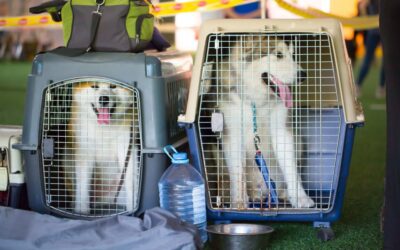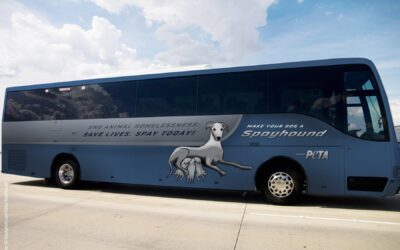Dogs often sit on other dogs’ faces to assert dominance or seek attention. This behavior may also be playful or a comforting gesture.
- Decoding Canine Body Language
- The Alpha Concept In Dog Behavior
- Understanding Motivations Behind Face Sitting
- Impact Of Face Sitting On Dog Relationships
- Training Approaches To Manage Dominance Behaviors
- Ensuring Harmonious Coexistence Among Pet Dogs
- Frequently Asked Questions Of Why Does My Dog Sit On My Other Dogs Face
- Conclusion
Having a canine companion brings joy, but it sometimes brings puzzling behavior, like when your dog decides to sit on your other dog’s face. This might leave you baffled, prompting questions about what drives this seemingly odd conduct. It’s crucial to understand that dogs communicate much differently than humans, using their behavior to express a variety of messages and emotions.
Whether your dog is trying to establish a hierarchy within your home, craving some playtime, or simply looking for a bit of affection, this face-sitting action is just one of the many ways dogs interact with one another. By observing the context and the dogs’ relationship, we can better understand this quirky doggy behavior and ensure that all your pets are happy and healthy.
Decoding Canine Body Language
Understanding why your dog sits on the other’s face requires observing their body language. Dogs communicate through postures and actions. Facial sitting can mean several things. It might be a playful gesture, similar to a human hug. In this case, the dog on top may lightly press down or invite play with a wagging tail. Contrastingly, it’s a show of dominance if accompanied by a stiff posture or a firm gaze. The dominant dog claims higher rank within the pack hierarchy. Younger dogs often do this to test boundaries with older dogs. Always observe closely and ensure play remains safe and friendly.
The Alpha Concept In Dog Behavior
Many people believe a dog sitting on another’s face shows dominance. Recent studies suggest that this behavior might not always mean control. Dogs have complex social structures, similar to human family dynamics. Social hierarchies exist, but not always how we once thought. The dominance theory, seeing actions as assertive alpha signs, is now seen as outdated.
Current research points to dogs seeking attention or play rather than asserting rank. The idea that one dog is the “boss” and others follow is oversimplified. Face sitting could be a playful gesture or a way to get closer physically and emotionally. Observing the dogs’ overall interaction patterns provides better understanding. Positive training methods and observing body language yield insights into their relationships and behaviors.
Understanding Motivations Behind Face Sitting
Dogs show dominance by sitting on another dog’s face. It’s like a power move to be the boss. This behavior isn’t just about being top dog. It’s also a way for them to get attention from their owners or the other dog if they’re feeling ignored. But sometimes, it’s not about control at all.
A caring pooch may snuggle up close, even on a buddy’s face, to show love. Think of it as their way of giving a big, furry hug. Though confusing to us, it’s normal in the dog world. They treat faces like we treat comfy pillows! Dogs think differently, so what seems rude to us might be perfectly friendly in dog language.
Impact Of Face Sitting On Dog Relationships
Dogs show dominance or affection by sitting on each other’s faces. This behavior may cause stress in the dog being sat on. Recognizing signs of anxiety is crucial. Watch for tail tucking, whining, or avoidance. Separating the dogs gently is important when aggression or distress is clear.
Frequent face sitting can lead to lasting fear. Consistent monitoring of dog playtime is necessary. Help create a positive environment for interaction. Ensure each dog finds comfort and safety in their shared space. Intervene only when a dog seems unhappy or overwhelmed.
Training Approaches To Manage Dominance Behaviors
Dogs often display dominance behaviors for many reasons. Training your pet involves understanding these behaviors. With consistent methods, change is possible.
Positive reinforcement techniques are key in this. Reward your dog for good behavior. Give them treats, praise, or playtime. This teaches them that calm, non-dominant actions are beneficial.
Seek professional help if problems persist. A professional trainer or behaviorist can offer specialized guidance. This might be necessary if dominance behaviors lead to fights or injuries.
Ensuring Harmonious Coexistence Among Pet Dogs
Dogs need to socialize just like people do. This helps them get along. Some dogs don’t learn this as puppies. They might sit on another dog’s face to show control. To stop this, give each dog their own space and toys. Playtime for dogs is good. They learn to share and make friends. Always watch how they play. Step in if one dog looks scared or upset. Treats can help dogs learn to behave. Give treats for good play. This makes them happy and they get along better.
Frequently Asked Questions Of Why Does My Dog Sit On My Other Dogs Face
Why Do Dogs Sit On Other Dogs?
Dogs often sit on other dogs to assert dominance or seek attention. They may also do this when playing or showing affection. It’s a part of their natural communication and social structure, not unlike the way humans use physical gestures.
Is It Normal For Dogs To Sit On Each Other’s Faces?
Yes, it’s normal and usually harmless. This behavior is more common in puppies and young dogs, who use it as a playful gesture or to test their boundaries. However, always supervise to ensure it doesn’t escalate to aggression.
What Does Face-sitting Signify In Dog Behavior?
Face-sitting can signify dominance or control in dog behavior. It is also a way for a dog to seek attention from the other or initiate play. It’s important to observe the context and individual dog’s body language.
How Should I Respond If My Dog Sits On My Other Dog’s Face?
Observe their reactions. If both dogs seem relaxed, it’s likely playful. However, if you notice signs of distress or aggression, separate them calmly and redirect their attention. Consistent training can also help modify unwanted behaviors.
Conclusion
Understanding the quirks of canine behavior helps strengthen the bond between you and your furry friends. When your dog sits on your other dog’s face, it’s about communication and hierarchy—not discomfort. Observing these actions gives insight into their social dynamics.
By recognizing and respecting these behaviors, we ensure a harmonious pack at home. Keep an eye out for further funny antics as you decode their doggy language together.


